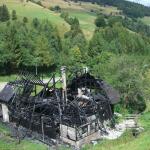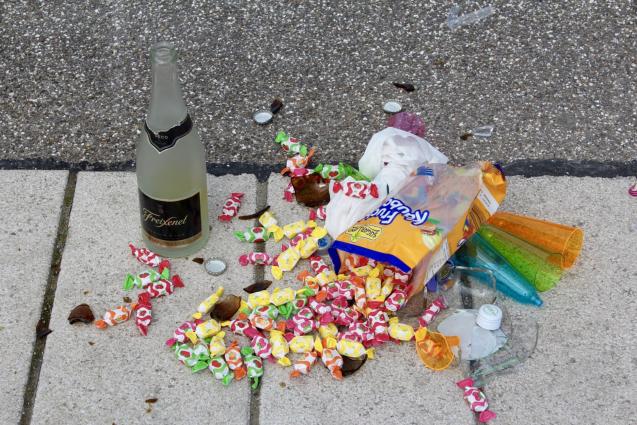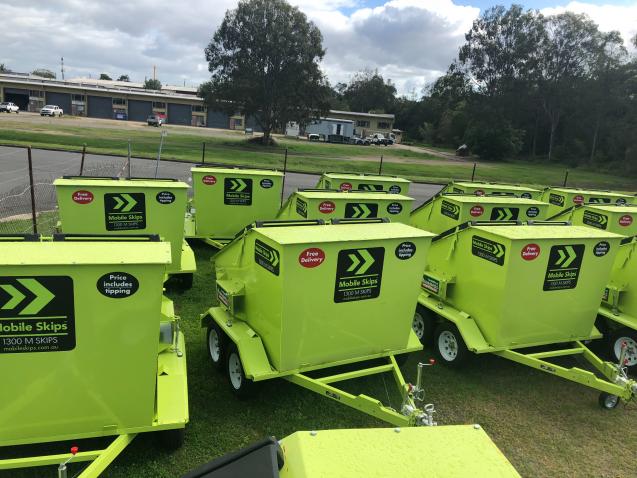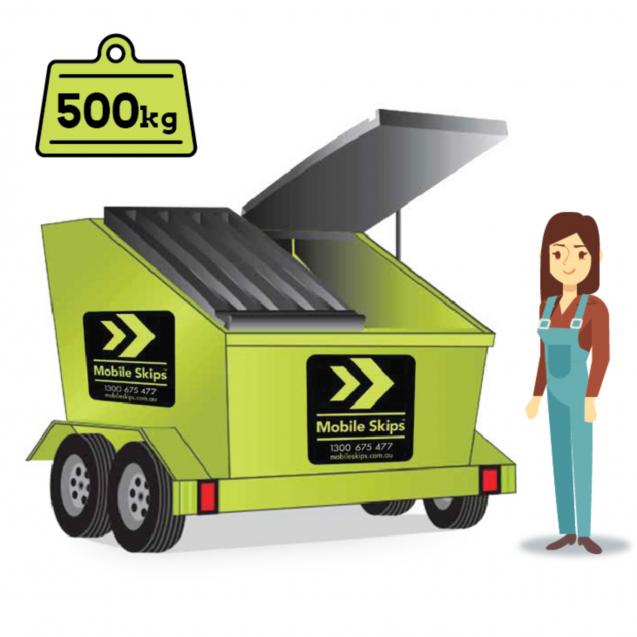
Dealing With Fire Damage To Maximise Remediation
By Mobile Skips|May 28, 2021
Fires are terrible accidents that take place when you least expect it. Whether natural or accidental, the damage is often extreme and irreparable. However, the damage that takes place does not always have to be completely unsalvageable.
Cleaning up after a fire requires expertise, time, and skill. In order to get the most of this difficult process, one needs to follow the right steps and make sure to keep safe. Remediation is a long and scary process; read on to find out more!
What Goes Into Remediation?
The process of a fire damage cleanup is a long and arduous one. There are several challenging steps to prevent lasting structural and environmental damage. The processes involved depend on the severity of the fire and the type of property it has destroyed.
The processes involve removing debris, removing any standing water, resolving water damage, removing the smoke particles, and ensuring that the air in the home is of great quality. The damage from the fire extends to well after the fire has been put out. The soot and smoke that has accumulated need to be adequately dealt with in the process.
It is a long and difficult process that requires expertise. A fire isn’t just harmful while it is raging, but after it has been put out. The safety and health hazards make it necessary for a restoration company to be involved in the process.
There are a significant time and effort that goes into remediation, and there is no reason to do it alone. A restoration company comes in to help with every part of the cleanup process. They also guide you through the most difficult and hazardous parts of the cleanup.
Things to Remember Right After a Fire
Having a fire affects your property is traumatising. The whole incident can leave you in a state of shock. It is difficult to know what to do when everything you had has burnt up in front of you. Here is a list of things you need to remember right after a fire.
Feel
Not feeling all your emotions will result in more stress. Make sure to take a breath and take a moment to gather your thoughts. The initial moments after the fire are the worst in terms of shock, and taking a little time to process your feelings goes a long way.
Take a moment to remember that this is the beginning of a long journey, but you don’t have to do it alone. Everything will go back to ‘normal,’ but until then, it is okay to feel sad or angry. Make sure to let go of these negative emotions lest they cause you more
stress.
Grieving the loss in the beginning also means you get to keep a clear head in the days that follow. You will make better decisions and get back to normal life a lot faster if you’re not trying to simultaneously bottle up your feelings!
Everything Takes Time
The cleanup will take a long time. It is going to take longer than you’d expect it to. However, rushing the process will not help you. Depending on the damage, the cleanup can take longer or shorter amounts of time.
The aftermath cleanup needs to be done in a safe and thorough manner. The after-effects of a fire can be just as harmful as the fire itself. The last thing you’d need is an unstable and unsafe property. Take your time with the process and let the experts do their jobs, one day at a time.
Insurance
Many forget to make the important phone calls right after a devastating loss. Make sure you call your insurance agency right after you call the fire department. The insurance company will be able to guide you through the steps and processes that need to be taken care of immediately.
The insurance company won’t just be of help financially but can be relied on to get the process done effectively and as fast as possible. They do thorough checks of the property and can assess all the damage that has taken place.
Temporary Home
If it is your home that has been damaged in a fire, then you need to start looking for a place to stay while the cleanup is happening. The fire department will have to do thorough checks of the property to make sure that there is nothing that can harm you before they allow you to go back.
From air quality to soot on the walls, everything will need to be addressed. They will also have to take a look at the structural integrity of the property as well as the water damage. Even if it was a small fire, the process is still extensive, so finding a place to stay in your best bet.
After a fire, with your emotions running haywire and stress building up, you’ll also need a place to relax. Preferably make sure you’re in a place where you’re surrounded by loved ones. It is easier to calm down and get your emotions in order when you’re safe and surrounded by love.
Danger Danger!
We’ve mentioned several times now that the hazards of a fire don’t stop after it has been put out. The ash, soot, and smoke residue can be extremely toxic and causing a lot of health issues.
When a house burns up, the materials in it release toxic chemicals that can be deadly is inhaled in large quantities. Wait for the fire department to confirm the air quality in your house and look through it for any other hazardous material.
Fire Damage Cleanup Process
The process of fire damage cleanup is a long and stressful one. With all the dangers of toxic gases hanging in the air, one needs to take the cleanup one step at a time. But what are the steps?
1. Confirm the Stability of the Property
Even after the fire has been dealt with, the property may not be stable or safe enough to enter. Fires tend to affect the structure, and the water damage that takes place when putting out the fire can compromise your safety. Make sure to let the inspector deem the property safe before you walk through.
2. Minimise damage
There are all sorts of issues that can take place after a fire. To name a few, mould, mildew, rusting, corrosion, bad air quality, and soot staining.
Soot staining is a big problem right after a fire. Materials such as plastic, carpet, and metals can get discoloured if the soot isn’t tackled in time. A lot of soot staining is removable if done quickly. Experts will make sure to analyse the fabric and minimise the damage done by the soot.
Mould and mildew are by-products of the water used to put out the fire. Anybody who has dealt with water damage knows how quickly mould and mildew can form. Make sure to be thorough when looking for water damage and remove any sign of mould and mildew.
Rust and corrosion are also a by-product of the water used. Any metal objects may rust or corrode to the point where they are irreparable. This goes for small electronics as well. Be careful when handling any electronics as the risk of shocks is increased.
Air quality is the biggest concern after a fire. The smoke and toxins hanging in the air can be incredibly harmful to your health. Professionals put a lot of the focus on reviving the air quality and remedying the damage caused by the smoke.
3. Remove Soot and Debris
The first thing any professional will do and will advise you to do is to get rid of the soot and debris from the property. This improves air quality and leaves room for larger restoration. Soot can be especially damaging to property, so that needs to be handled quickly!
4. Remove Possessions Too Damaged
We all have possessions that we don’t want to get rid of. However, in some cases, it becomes necessary to get rid of any possessions that are too damaged. This helps with restoration and reduce the debris around the property. Make sure to be careful when handling electronics!
5. Dry
Waterlogging and damage need to be dealt with carefully and quickly. Any standing water should be removed, and the property needs to be dried out. The walls and flooring can seep up the water and cause even more damage to the property. So, make sure to dry the house before attempting a larger restoration.
6. Deodorise, deep clean, and stain-removal
Salvage the items that can be salvage. Do not waste time trying to restore what is too damaged. The process of deep cleaning a fire damaged property takes time, and you don’t want to waste that on items that cannot be restored.
For more of our articles about waste management in Australia, visit https://mobileskips.com.au/news
Cleaning up after a fire requires expertise, time, and skill. In order to get the most of this difficult process, one needs to follow the right steps and make sure to keep safe. Remediation is a long and scary process; read on to find out more!
What Goes Into Remediation?
The process of a fire damage cleanup is a long and arduous one. There are several challenging steps to prevent lasting structural and environmental damage. The processes involved depend on the severity of the fire and the type of property it has destroyed.
The processes involve removing debris, removing any standing water, resolving water damage, removing the smoke particles, and ensuring that the air in the home is of great quality. The damage from the fire extends to well after the fire has been put out. The soot and smoke that has accumulated need to be adequately dealt with in the process.
It is a long and difficult process that requires expertise. A fire isn’t just harmful while it is raging, but after it has been put out. The safety and health hazards make it necessary for a restoration company to be involved in the process.
There are a significant time and effort that goes into remediation, and there is no reason to do it alone. A restoration company comes in to help with every part of the cleanup process. They also guide you through the most difficult and hazardous parts of the cleanup.
Things to Remember Right After a Fire
Having a fire affects your property is traumatising. The whole incident can leave you in a state of shock. It is difficult to know what to do when everything you had has burnt up in front of you. Here is a list of things you need to remember right after a fire.
Feel
Not feeling all your emotions will result in more stress. Make sure to take a breath and take a moment to gather your thoughts. The initial moments after the fire are the worst in terms of shock, and taking a little time to process your feelings goes a long way.
Take a moment to remember that this is the beginning of a long journey, but you don’t have to do it alone. Everything will go back to ‘normal,’ but until then, it is okay to feel sad or angry. Make sure to let go of these negative emotions lest they cause you more
stress.
Grieving the loss in the beginning also means you get to keep a clear head in the days that follow. You will make better decisions and get back to normal life a lot faster if you’re not trying to simultaneously bottle up your feelings!
Everything Takes Time
The cleanup will take a long time. It is going to take longer than you’d expect it to. However, rushing the process will not help you. Depending on the damage, the cleanup can take longer or shorter amounts of time.
The aftermath cleanup needs to be done in a safe and thorough manner. The after-effects of a fire can be just as harmful as the fire itself. The last thing you’d need is an unstable and unsafe property. Take your time with the process and let the experts do their jobs, one day at a time.
Insurance
Many forget to make the important phone calls right after a devastating loss. Make sure you call your insurance agency right after you call the fire department. The insurance company will be able to guide you through the steps and processes that need to be taken care of immediately.
The insurance company won’t just be of help financially but can be relied on to get the process done effectively and as fast as possible. They do thorough checks of the property and can assess all the damage that has taken place.
Temporary Home
If it is your home that has been damaged in a fire, then you need to start looking for a place to stay while the cleanup is happening. The fire department will have to do thorough checks of the property to make sure that there is nothing that can harm you before they allow you to go back.
From air quality to soot on the walls, everything will need to be addressed. They will also have to take a look at the structural integrity of the property as well as the water damage. Even if it was a small fire, the process is still extensive, so finding a place to stay in your best bet.
After a fire, with your emotions running haywire and stress building up, you’ll also need a place to relax. Preferably make sure you’re in a place where you’re surrounded by loved ones. It is easier to calm down and get your emotions in order when you’re safe and surrounded by love.
Danger Danger!
We’ve mentioned several times now that the hazards of a fire don’t stop after it has been put out. The ash, soot, and smoke residue can be extremely toxic and causing a lot of health issues.
When a house burns up, the materials in it release toxic chemicals that can be deadly is inhaled in large quantities. Wait for the fire department to confirm the air quality in your house and look through it for any other hazardous material.
Fire Damage Cleanup Process
The process of fire damage cleanup is a long and stressful one. With all the dangers of toxic gases hanging in the air, one needs to take the cleanup one step at a time. But what are the steps?
1. Confirm the Stability of the Property
Even after the fire has been dealt with, the property may not be stable or safe enough to enter. Fires tend to affect the structure, and the water damage that takes place when putting out the fire can compromise your safety. Make sure to let the inspector deem the property safe before you walk through.
2. Minimise damage
There are all sorts of issues that can take place after a fire. To name a few, mould, mildew, rusting, corrosion, bad air quality, and soot staining.
Soot staining is a big problem right after a fire. Materials such as plastic, carpet, and metals can get discoloured if the soot isn’t tackled in time. A lot of soot staining is removable if done quickly. Experts will make sure to analyse the fabric and minimise the damage done by the soot.
Mould and mildew are by-products of the water used to put out the fire. Anybody who has dealt with water damage knows how quickly mould and mildew can form. Make sure to be thorough when looking for water damage and remove any sign of mould and mildew.
Rust and corrosion are also a by-product of the water used. Any metal objects may rust or corrode to the point where they are irreparable. This goes for small electronics as well. Be careful when handling any electronics as the risk of shocks is increased.
Air quality is the biggest concern after a fire. The smoke and toxins hanging in the air can be incredibly harmful to your health. Professionals put a lot of the focus on reviving the air quality and remedying the damage caused by the smoke.
3. Remove Soot and Debris
The first thing any professional will do and will advise you to do is to get rid of the soot and debris from the property. This improves air quality and leaves room for larger restoration. Soot can be especially damaging to property, so that needs to be handled quickly!
4. Remove Possessions Too Damaged
We all have possessions that we don’t want to get rid of. However, in some cases, it becomes necessary to get rid of any possessions that are too damaged. This helps with restoration and reduce the debris around the property. Make sure to be careful when handling electronics!
5. Dry
Waterlogging and damage need to be dealt with carefully and quickly. Any standing water should be removed, and the property needs to be dried out. The walls and flooring can seep up the water and cause even more damage to the property. So, make sure to dry the house before attempting a larger restoration.
6. Deodorise, deep clean, and stain-removal
Salvage the items that can be salvage. Do not waste time trying to restore what is too damaged. The process of deep cleaning a fire damaged property takes time, and you don’t want to waste that on items that cannot be restored.
For more of our articles about waste management in Australia, visit https://mobileskips.com.au/news



